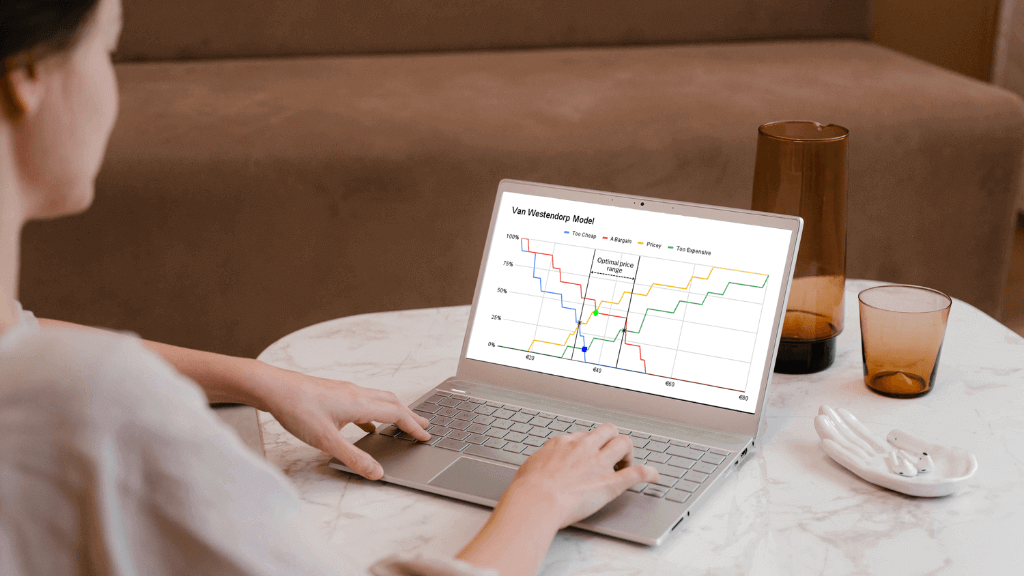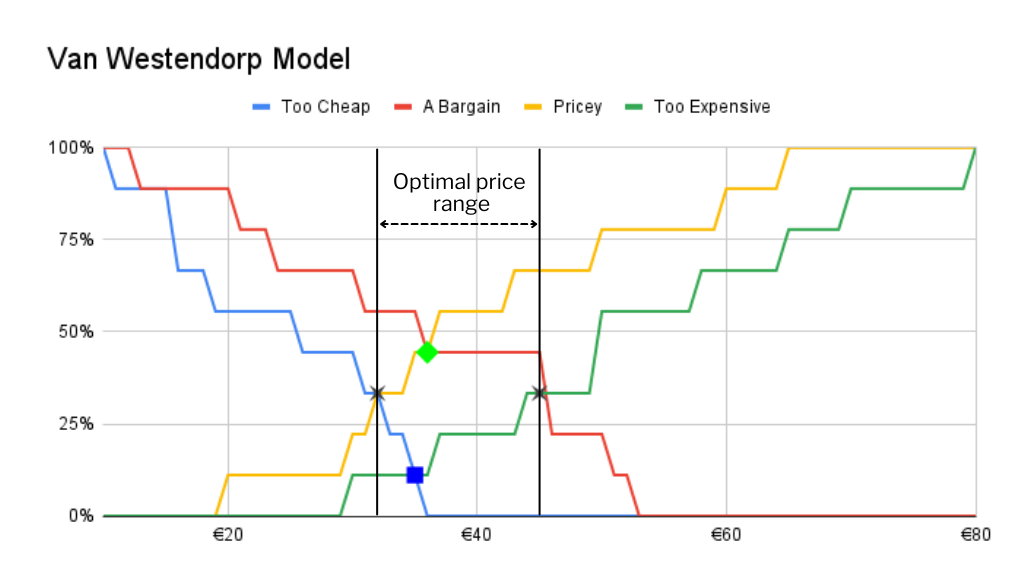

The Van Westendorp or price sensitivity model helps calculate the most suitable price for the different products or services offered by an e-commerce business. The model is based on the effect prices have on consumers and how much they are willing to pay for each item. It is important because price is one of the most influential variables in the final purchase decision. Therefore, e-commerce businesses need to define an appropriate pricing strategy and strike a balance between attractive prices for consumers and profitable prices. Minderest explains how the Van Westendorp helps achieve this.
4 key questions for optimal pricing
The Van Westendorp pricing model poses 4 questions to customers to analyse the maximum price they are prepared to pay for a product. These questions are:
- At what price would you not buy this product because it becomes too expensive?
- At what price would you consider this product starts to become expensive, but would you still buy it?
- At what price would you consider this product too cheap, and would you doubt its quality?
- At what price would you consider this product cheap?
The results of interviewing a substantial sample of customers are plotted on a graph, where the X-axis is the price, and the Y-axis is the percentage of respondents. Thus, the number of times each answer is repeated, for each price, allows the plotting of four curves. The curves show the perception of too expensive, expensive but acceptable, too cheap, and cheap. The point at which the “too expensive” and “too cheap” curves intersect will be the optimal price for each product featured in the survey.
Advantages of the Van Westendorp model
The main advantage is that this research is simple and requires minimal time from users. In addition, the presentation of the results in the coordinate graph allows you, as a retailer, to see the optimal prices, so you can adjust your prices to optimise sales and boost the engagement of potential customers.
The main shortcoming of this analysis of consumer price sensitivity is that it does not consider the features and quality of products. Respondents see the type of product, but not its features. Given the complexity of today's markets, it may cause the data not to reflect reality objectively. Because these days we know, for example, that not all mobile phones or computers are perceived in the same way by the whole population.

Price changes from optimal price
Based on this optimal price you can set a safe price range within which to fluctuate, without affecting the demand, or users' image of the brand. These price fluctuations will be more profitable if you engage the help of two tools:
Competitor price monitoring
Knowing competitors' prices is essential to be able to offer competitive pricing. The combination of price sensitivity analysis and competitor price monitoring will allow you to improve your e-commerce business's positioning against other retailers and combat potential user dropout.
Dynamic Pricing
Through dynamic pricing you can automatically adjust the prices of your products and services according to market changes to ensure you maximise profits. Changes in supply and demand levels in the online market can be fast. This is especially true in the last quarter of the year, when multiple offers and promotions such as Black Friday or the Christmas campaign occur.
Today e-commerce has advanced pricing suites that bring these features together and aim to speed up decision-making to improve the company’s profitability given the importance of pricing. Because while we currently find other factors that help users make the final purchase decision, such as brand values or proximity, the price remains a crucial element in engagement and conversion.
Find out how Minderest can take your business to the next level.
Contact our pricing experts to see the platform in action.
Related Articles

AI Agents and Holiday Season: How to Adapt Your Pricing Strategy
Holiday season planning used to revolve around creative campaigns, emotional storytelling, and optimizing the user experience. However, a silent revolution is changing the rules of the game. The rise...
How Surveillance Pricing Works and Its Applications for Your Business
The term "Surveillance Pricing" might conjure images of corporate espionage and price manipulation. However, this initial perception hides one of the most sophisticated and powerful strategies in...